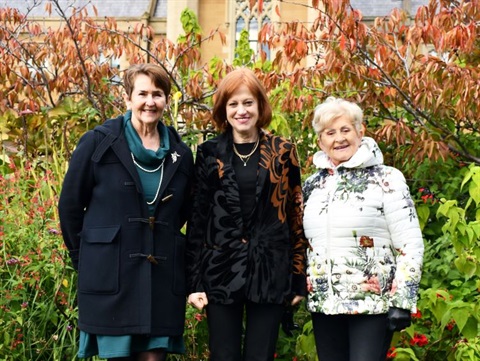Since Australia’s First Nations Voice to Parliament referendum in October 2023, diverse commentaries have sought to explain why it failed. But what does an analysis of media and polling data tell us about the outcome six months on?
Authors
Andrea Carson
Professor of Political Communication, Department of Politics, Media and Philosophy, La Trobe University
Rebecca Strating
Director, La Trobe Asia, and Professor of International Relations, La Trobe University
Simon Jackman
Honorary Professor, University of Sydney
Our expert team analysed over 3 million social and mainstream media posts and stories, thousands of online political ads, and scores of public opinion polls to address common misconceptions about the outcome. We identified key factors that contributed to the defeat. They are:
1. Lack of bipartisan support. As history has shown, bipartisan support is critical for success in Australia referendums. The Voice was no different.
Public support nose-dived after Peter Dutton’s announcement of opposition to the Voice in April 2023, following the Nationals’ decision to reject the “yes” case in November 2022.
As indicated by opinion polls, support for “Yes” dropped 25 percentage points in the year leading up to the vote. The decline accelerated after Dutton’s announcement.
Averaging public opinion polls over 2022-23, support peaked around 65% in October 2022. This is a long way from the final result of 39.94% of voters nationally supporting a change to the Constitution, compared to 60.06% rejecting it.
But this initial majority backing for the Voice was likely due to early surveys overstating support. This was a function of the issue’s low salience, the superficially positive character of the Voice label, and biases in survey responses attributable to social desirability and acquiescence.
Even by historical standards, this was a significant shift in public opinion over a short time and shows the influence political elites have on public opinion. It also underscores the structural difficulty of constitutional change without bipartisan consensus.
2. Labor voters divided. Labor voters were equivocal about the Voice, affecting the outcome. We find wide variation in support for the Voice across Labor-held seats, which was a principal contributor to the referendum’s failure.
Only 21 of Labor’s 78 seats in the House of Representatives returned yes majorities. Most of these most were inner-city electorates. Three Labor-held seats – Spence (outer Adelaide), Hunter (regional NSW) and Blair (Qld) – had no votes exceeding 70%.
In contrast to Labor, Greens and Teal voters overall supported the Voice. If the 2022 federal election results were to be transposed directly onto the Voice referendum, the Voice would have prevailed.
3. Demographic fault lines. Generally speaking, voters in inner metropolitan electorates in capital cities were more likely to back the Voice proposal. Rural and regional seats recorded the largest no votes.
Support for the Voice also cleaved along lines marked by age, educational attainment and wealth. In the small number of locations where it is clear Indigenous people comprised the bulk of voters, we see Indigenous Australians overwhelmingly supported the Voice.
4. The no campaign was simple, repetitive and targeted. While it is impossible to draw direct lines between campaign messaging and electoral outcomes, we see patterns in paid online advertising and free mainstream and social media data that offer insights into the success of the no campaign. It was highly targeted.
While its message was channelled through a range of entities such as Referendum News, Not Enough, Not My Voice and Fair Australia, these were all overseen by conservative lobby group, Advance Australia. Their focus-group-tested messages were simple – the voice will divide us and if you dont know, vote no – and repeated frequently across Australias diverse media ecosystem.
When it comes to media coverage, content volume mattered less than strategy. While no attracted less overall mainstream media coverage, according to our analysis of Meltwater data, it honed its key messages much earlier and embraced social media, particularly TikTok.
Spearheading these narratives were Indigenous campaigners Jacinta Nampijinpa Price and Nyunggai Warren Mundine. Both were household names by polling day. They were a potent team and bolstered the credibility of arguments against the referendum for non-Indigenous Australians.
Refining the no narrative early on enabled proponents to amass more followers across social media platforms than yes – with the exception of the Uluru Statement’s Instagram presence.
Media coverage by Sky News Australia amplified the no case. Sky had a vast reach through its YouTube channel (over 9 million views from 500 Voice clips), subscription TV and free regional TV programs. Its commentators and conservative politicians also used story snippets to spread the no message on social media.
In contrast, the yes campaigns were disparate. These consisted of at least three major groups – Yes23, Uluru Statement from the Heart and Liberals for Yes – offering a range of messages and messengers. This diversity of actors and narratives, including business, unions and civil society groups, may have generated voter confusion, message overload and, in some instances, backlash.
5. Mis- and disinformation and targeted attacks. This was prevalent during the referendum across both mainstream and social media spheres. It coincided with unprecedented attacks on third-party fact-checkers, notably RMIT FactLab. Our post-referendum survey showed subsequent falls in trust for RMIT FactLab among right-leaning voters.
The referendum also prompted unsubstantiated American-styled attacks on the Australian Electoral Commission, with accusations of vote rigging including from the opposition leader. But unlike the US, these claims were by the victors, not the vanquished.
Some reporting – including by the BBC – also linked this disinformation ecosystem to the amplification of racist memes and commentary during the campaign.
6. Crowding-out by other issues. As the Voice campaign unfolded, other concerns, notably the cost-of-living crisis, dominated the policy agenda and polls. The no campaign strategically utilised voter concerns about personal finances and the economy in its paid advertisements, highlighting the referendum







